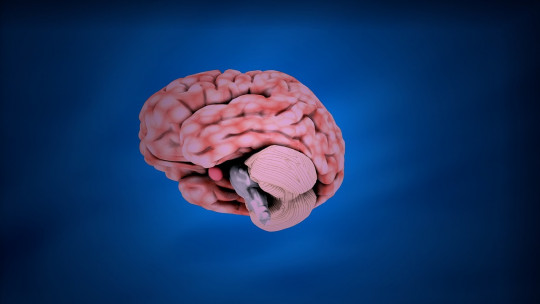Researchers from the University of Salamanca have developed the prototype of a device that would allow, after analyzing the speech of an elderly person, establish the likelihood of having Alzheimer’s disease in the future.
After following this line of research for 6 years, Juan José García Meilán, from the Faculty of Psychology of the University of Salamanca, Francisco Martínez Sánchez from the University of Murcia and the rest of their work team have managed to develop this device that in just Five minutes can establish a diagnosis.
Detect Alzheimer’s through voice
The device developed by Martínez Sánchez and his collaborators (2016) bases its operation in the analysis of the rhythm of language a property that is negatively affected as Alzheimer’s disease develops.
Although language rhythm patterns are of great importance in human communication (Rothermich, Schmidt-Kassow and Kotz, 2012), the differences between these in a healthy person and in one who begins to develop this disease are impossible to determine. perceive simply by listening.
Therefore, to apply this test, patients must read some phrases that are recorded by this device that, through algorithms analyzes the properties of language and compares them with the typical parameters of Alzheimer’s.
The problematic diagnosis of Alzheimer’s
Currently there is no test or diagnostic tool that allows us to detect this disease completely accurately. There are, for example, clinical diagnostic criteria that allow us to affirm that the patient probably suffers from the disease once he or she meets a series of symptoms, such as having a progressive onset. or that the person suffers serious memory problems.
This makes early diagnosis through clinical observation impossible, that is, before the disease appears. Other tests such as cerebrospinal fluid analysis are too invasive.
On the other hand, the neuroimaging techniques that can be applied to detect this disease are very expensive, so they cannot be addressed on a large scale by both the public and private health systems.
Regarding neuropsychological tests these require a large amount of time to be applied (Laske et al., 2015). Furthermore, despite having characteristic symptoms, the disease cannot be 100% confirmed until the brain tissues are analyzed after the patient’s death (National Institute on Aging, 2010).
The importance of the discovery
Taking this situation into account, the development of this type of devices is of vital importance. Firstly, it is a test that establishes a diagnosis in a short period of time, although we must not forget that it must be combined with other types of evaluations.
The second advantage to mention is that its use will be very intuitive so its use will be accessible to both clinicians and researchers.
Thirdly, it should be noted that the economic cost of applying this test will be quite low.
Finally, the fact that it allows us to detect the probability of suffering from the disease before your symptoms appear It is really important, since it would allow the establishment of therapies, both psychological and pharmacological, that focus on preventing the associated deterioration and therefore improve the quality of life of the affected people.
The incidence of this disease
Alzheimer’s disease entails a condition that, as it progresses and develops, even makes the person unable to live independently.
As published by Alzheimer’s Disease International (2015) in its report on dementia, It is expected that every 20 years it will multiply by two the number of people suffering from a dementia-type disease. That is, while in 2015 approximately 46.8 million were affected by these diseases, in 2030 the number will rise to 74.8 million and, in 2050, this figure will have increased and will reach 130 million.
This organization classifies these forecasts as those typical of an epidemic although they claim that they are mainly due to the aging of the population worldwide.
Although this increase in the number of cases will be accentuated due to greater life expectancy, according to the report, there will be differences between regions, both globally and within the same country. This is due to factors such as the access that people have to the public health system since this influences both the treatment and detection of the disease. For this reason, this World Alzheimer Report entrusts public authorities to include both the prevention and treatment of dementia among their priorities.
The cognitive reserve
In view of these predictions, some researchers interested in this pathology have focused on how interventions such as physical activity, social interactions, diet modification and staying mentally active affect its prevention. Regarding the latter, It is important to mention the concept of cognitive reserve.
This refers to the fact that if we exercise our intellectual capacity, our brain, due to its plasticity, will be able to adapt better to the damage it suffers, helping to cope with the aging process and preventing the appearance of dementia (Stern, 2002). .
Therefore, detect Alzheimer’s disease early It will allow us to propose therapies focused on prevention through the stimulation of the mind. We could define these therapies called Cognitive Stimulation (CS) as a type of intervention that offers older people the enjoyment of activities that stimulate thinking, memory and concentration, generally in a social context (Woods, Aguirre , Spector and Orrell, 2012).
These types of interventions have proven effective in healthy elderly (Tardif and Simard, 2011) in elderly hospitalized for a long period (Castel, Lluch, Ribas, Borràs and Moltó, 2015) and in people who suffered from Alzheimer’s Disease, improving neuropsychiatric symptoms and their quality of life and that of their caregivers (Fukushima et al., 2015). We must not forget that early detection of Alzheimer’s would also allow treatments for this disease to be focused on the stage prior to the appearance of its symptoms.
Conclusions
Although this device is still only a prototype, Its effectiveness and other characteristics are quite encouraging.
This line of research, on the other hand, is a great example of the importance of investing in science since, although we do not see the results in the short term, knowledge about certain subjects will end up having an impact on an improvement in the quality of life sooner or later. .
Bibliographic references:
- Laske, C., Sohrabi, H., Frost, S., López-de-Ipiña, K., Garrard, P., Buscema, M., … & O’Bryant, S. (2015). Innovative diagnostic tools for early detection of Alzheimer’s disease. Alzheimer’s & Dementia, 11(5), 561-578.
- Martínez-Sánchez, F., Meilán, J., Vera-Ferrándiz, J., Carro, J., Pujante-Valverde, I., Ivanova, O., & Carcavilla, N. (2016). Speech rhythm alterations in Spanish-speaking individuals with Alzheimer’s disease. Aging, Neuropsychology, and Cognition.
- National Institute on Aging. (2010). Alzheimer’s Disease.
- Rothermich, K., Schmidt-Kassow, M., & Kotz, S. (2012). Rhythm’s gonna get you: regular meter facilitates semantic sentence processing. Neuropsychologia, 50(2), 232-244.
- Tardif, S., & Simard, M. (2011). Cognitive Stimulation Programs in Helathy Elderly: A Review. International Journal of Alzheimer’s Disease, 2011.
- Stern, Y. (2002). What is cognitive reserve? Theory and research application of the reserve concept. Journal of the International Neuropsychological Society, 8(3), 448-460.
- Woods, B., Aguirre, E., Spector, A., & Orrell, M. (2012). Cognitive stimulation to improve cognitive functioning in people with dementia. Cochrane Database of Systematic Reviews, 2.









